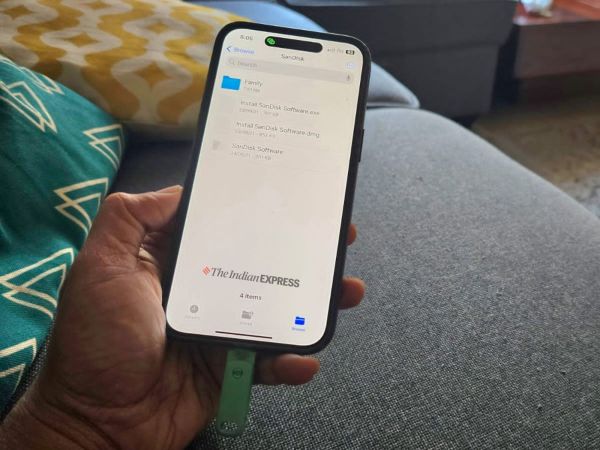USB drives have evolved over the past few years. From being priced accessories a decade back to something that will just fill up your office bag a few years later, the USB drive has had a long journey till now when it is something many of us use very rarely as we rely on cloud storage for backup and data transfer. But there are still some use cases for USB drives, especially when you are pressed for time and facing deadlines and this is where the Sandisk Ultra Dual Drive Go USB-C will hope to make an impact.
The 128GB Sandisk Ultra Dual Drive Go USB-C is a very simple device with a USB port that swings into its cover. The USB-C port has suddenly become more powerful and works on all Android phones as well as the latest iPhone 15 generation. Plus, the USB-C is the only port on the new MacBook, so there is a possibility that a user like me might actually start using these again.
I have been travelling with the Sandisk Ultra Dual Drive Go USB-C for a couple of weeks now. First, in San Francisco, to cover the launch of the new Samsung Galaxy S24 Ultra I had the task of uploading about 10GB of videos I had shot of the new devices to a transfer site to share with my team back home in India. I could do it from the phone, but usually, there is a chance of this transfer breaking, especially when you are on unreliable hotel or cafe Wi-Fi. This is when I decided to move the video files to the Sandisk Ultra Dual Drive Go and transfer them using my MacBook when back in my room.
On the iPhone, I had to select the videos and copy them to the Sandisk folder that was showing in the Files app. The transfer took under two minutes, and the device was a bit warm at the end of it. Pretty neat, and I could easily unplug the drive and use it to upload the files for transfer.

A week later, I was at a family meeting where I used the Samsung Galaxy S24 Ultra to record a lot of the fun we were having. This ended up as about 12GB of video files. Since I didn’t want to lose these files, I thought it would be best to save them on to my MacBook. I plugged in the Sandisk Go to the Samsung Galaxy S24 Ultra, went to files, opened the external drive folder, created a new folder called Family and pasted all the files in it. The entire process took under 3 minutes, that is including the transfer of the 22 files.
The Sandisk Ultra Dual Drive Go USB-C is a perfect device to use as a backup to save all your important files and to create a backup for files that don’t need to be on your iPhone or Android smartphone all the time.

Over the past couple of weeks, I have been wondering how the USB drive has changed. A 1GB USB drive used to a costly proposition at one time and now we have 128GB USB-C drive that plugs on to all the devices you have from the world of iOS to Android, Mac and PC.
At Rs 1,139 on Amazon, the versatile Sandisk Ultra Dual Drive Go USB-C is a must-have for those who have multiple devices and need to transfer heavy files around all the time as part of their work flows. It is also a testament of how the USB drive has evolved and become more than capable over the years.
© IE Online Media Services Pvt Ltd
First uploaded on: 03-02-2024 at 10:48 IST







